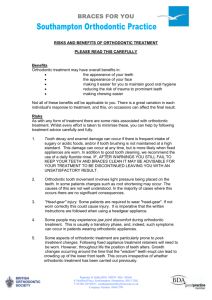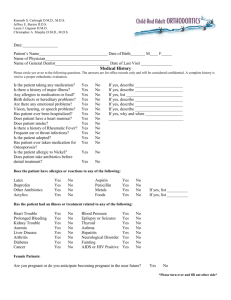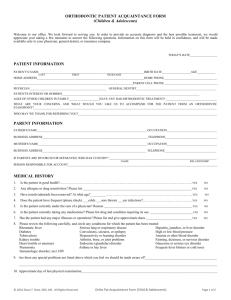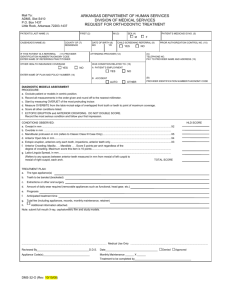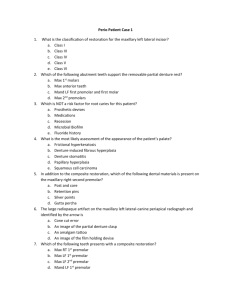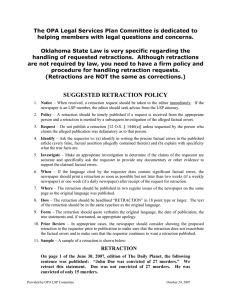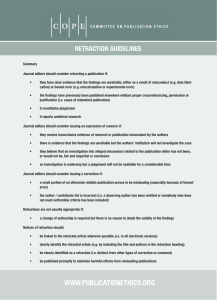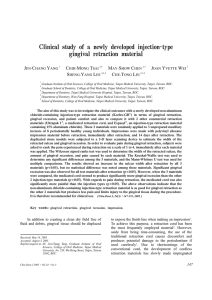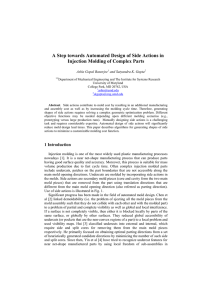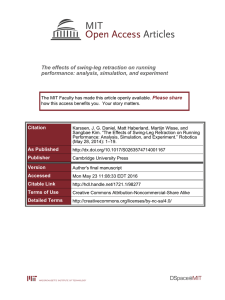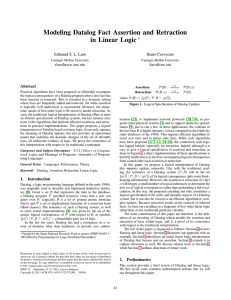RESEARCH PROTOCOL: The Effects of Micro
advertisement
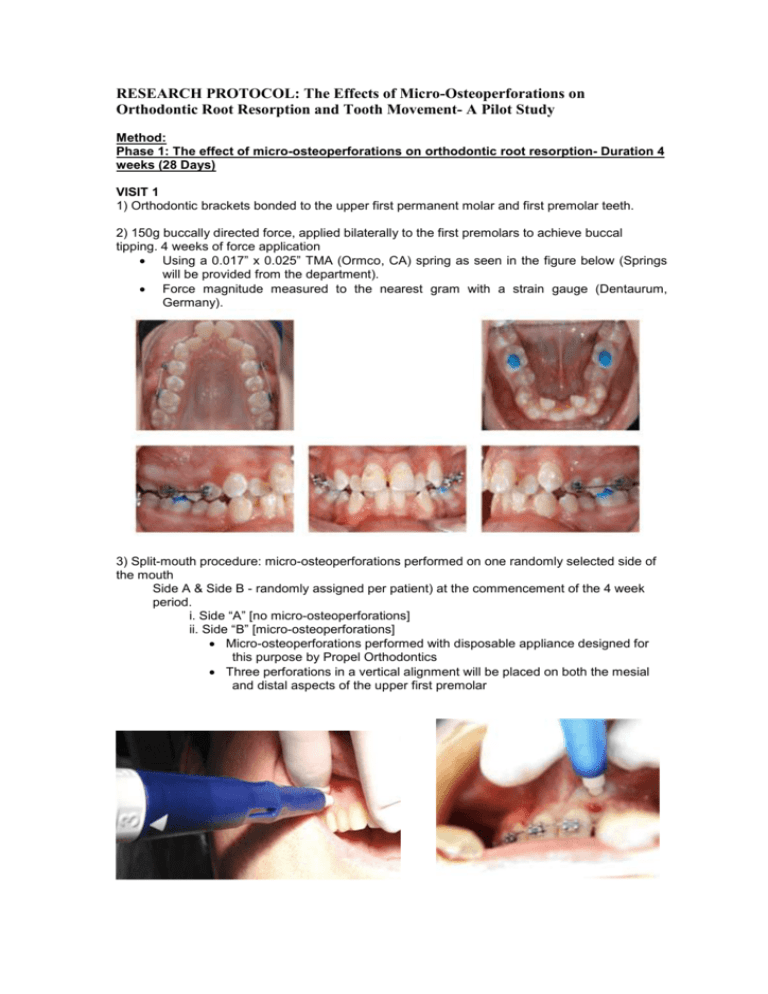
RESEARCH PROTOCOL: The Effects of Micro-Osteoperforations on Orthodontic Root Resorption and Tooth Movement- A Pilot Study Method: Phase 1: The effect of micro-osteoperforations on orthodontic root resorption- Duration 4 weeks (28 Days) VISIT 1 1) Orthodontic brackets bonded to the upper first permanent molar and first premolar teeth. 2) 150g buccally directed force, applied bilaterally to the first premolars to achieve buccal tipping. 4 weeks of force application Using a 0.017” x 0.025” TMA (Ormco, CA) spring as seen in the figure below (Springs will be provided from the department). Force magnitude measured to the nearest gram with a strain gauge (Dentaurum, Germany). 3) Split-mouth procedure: micro-osteoperforations performed on one randomly selected side of the mouth Side A & Side B - randomly assigned per patient) at the commencement of the 4 week period. i. Side “A” [no micro-osteoperforations] ii. Side “B” [micro-osteoperforations] Micro-osteoperforations performed with disposable appliance designed for this purpose by Propel Orthodontics Three perforations in a vertical alignment will be placed on both the mesial and distal aspects of the upper first premolar VISIT 2 4) Bilateral extraction of first premolars at 4 weeks (28 days). Random assignment of identification number to experimental and control teeth for MicroCT scanning as same researcher to do extraction and scanning 5) Analysis of teeth at Sydney Dental Hospital using a Micro-CT scanner. Statistical analysis: Amount of root resorption with Force (Control) vs Force + micro-osteoperforations. 6) Patients will also be asked to record an assessment of the level of discomfort on the experimental and control side using a Visual Analogue Scale in a take home questionnaire. The subjects will complete the questionnaire the following time points: 24 hours, 2 days, 3 days and 7 days. Phase 2: Effect of micro-osteoperforations on tooth movement- Duration 36 Weeks (24 weeks of alignment and levelling + 8 weeks of canine retraction) The allocated sides of the mouth for each subject (control, micro-osteopeforations) will be kept from part one. 1) Full orthodontic braces upper and lower arches Levelling and aligning the teeth for 24 weeks o Reviewed every 8 weeks (3 visits) 2) After 24 weeks: micro-osteoperforations performed on only one side of the mouth- same as Phase 1 a. Split-mouth procedure (Side A & Side B - randomly assigned per patient) during the same 4 week period. i. Side “A” [no micro-osteoperforations] ii. Side “B” [micro-osteoperforations] Micro-osteoperforations performed with disposable appliance designed for this purpose by Propel Orthodontics Three perforations in a vertical alignment on alveolar bone associated with distal aspect of the upper first premolar 3) Canines retracted bilaterally into the upper 1st premolar extraction spaces using Nickel Titanium springs. 8 weeks retraction period. 4) Review every 2 weeks for 8 weeks (4 visits) Clinical measurements and impressions (taken every 14 and 28 days respectively). Clinical measurements taken using standardised Digital Callipers. o Inter-bracket distance (between Canine and 2nd Premolar brackets) measured and recorded, every 14 days Analysis of measurements and Impressions – every 28 days. 5) Intra-patient Rate and Amount of retraction compared (micro-osteoperforation vs control). 4 weeks after the commencement of the 8-week canine retraction period Clinical photographs and alginate impressions After completion of the canine retraction period – 8 weeks Clinical photographs and alginate impressions Statistical analysis: Compare: 1) Rate of tooth movement (micro-osteoperforation vs control). 2) Amount of retraction (micro-osteoperforation vs control).
